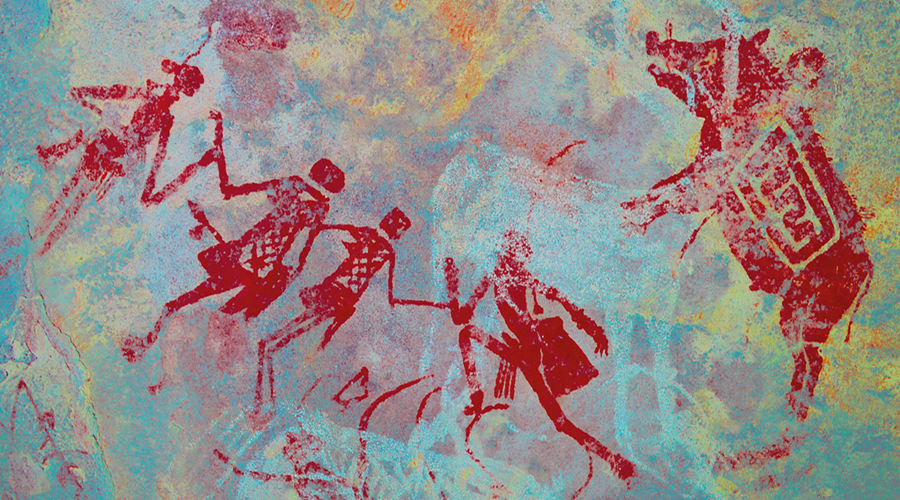


An article from Newcastle University on phys.org - Stonehenge may have been built using lard - reports on a new study suggesting that pig fat could have been used to grease the sledges used to transport the massive stones of Stonehenge into position.

Fat residues on shards of pottery found at Durrington Walls, near Stonehenge, have long been assumed to be connected with feeding the many hundreds of people that came from across Britain to help construct the ancient monument.
But new analysis by archaeologists at Newcastle University in the UK suggests that because the fragments came from dishes that would have been the size and shape of buckets, not cooking or serving dishes, they could have been used for the collection and storage of tallow - a form of animal fat.

Dr. Lisa-Marie Shillito, Senior Lecturer in Landscape Archaeology, Newcastle University, explains that she was interested in the exceptional level of preservation and high quantities of lipids - or fatty residues - being recovered from the pottery. Why were there high quantities of pig fat in pottery, when the animal bones that have been excavated at the site show that many of the pigs were 'spit roasted' rather than chopped up as you would expect if they were being cooked in the pots?
It is now generally accepted that the huge megaliths that make up Stonehenge were moved by human effort. Recent experiments have suggested that the stones - up to eight metres high and weighing as much as two tonnes - could have been moved by 20 people by placing them on a sled and sliding them over logs.
The pottery at Durrington Walls is one of the best studied for organic residues, with over 300 shards having been analysed as part of wider studies of Grooved Ware use in Britain, and more recently the Feeding Stonehenge project, on which Dr. Shillito worked.
Analysis of residues of absorbed fat is a well-established technique for revealing what foods different type of pottery was used for. But more attention needs to be paid to how this information is interpreted, Dr. Shillito argues; until now, there has been a general assumption that the traces of animal fat absorbed by these pieces of pottery were related to the cooking and consumption of food, rather than evidence of the greased sled theory. Research continues.
Read more:
Stonehenge
by Bradshaw Foundation
Tuesday 26 November 2024
by Bradshaw Foundation
Monday 27 November 2023
by Bradshaw Foundation
Friday 07 October 2022
by Bradshaw Foundation
Friday 05 November 2021
by Bradshaw Foundation
Tuesday 03 August 2021
by Bradshaw Foundation
Thursday 05 November 2020
by Bradshaw Foundation
Thursday 08 October 2020
by Bradshaw Foundation
Monday 22 June 2020
by Bradshaw Foundation
Monday 27 April 2020
by Bradshaw Foundation
Wednesday 22 January 2020
by Bradshaw Foundation
Tuesday 16 July 2019
by Bradshaw Foundation
Thursday 20 June 2019
by Bradshaw Foundation
Wednesday 08 May 2019
by Bradshaw Foundation
Tuesday 12 February 2019
by Bradshaw Foundation
Thursday 06 September 2018
by Bradshaw Foundation
Wednesday 06 June 2018
by Bradshaw Foundation
Tuesday 26 November 2024
by Bradshaw Foundation
Monday 27 November 2023
by Bradshaw Foundation
Friday 07 October 2022
by Bradshaw Foundation
Friday 05 November 2021
by Bradshaw Foundation
Tuesday 03 August 2021
by Bradshaw Foundation
Thursday 05 November 2020
by Bradshaw Foundation
Thursday 08 October 2020
by Bradshaw Foundation
Monday 22 June 2020
by Bradshaw Foundation
Monday 27 April 2020
by Bradshaw Foundation
Wednesday 22 January 2020
by Bradshaw Foundation
Tuesday 16 July 2019
by Bradshaw Foundation
Thursday 20 June 2019
by Bradshaw Foundation
Wednesday 08 May 2019
by Bradshaw Foundation
Tuesday 12 February 2019
by Bradshaw Foundation
Thursday 06 September 2018
by Bradshaw Foundation
Wednesday 06 June 2018
Friend of the Foundation











